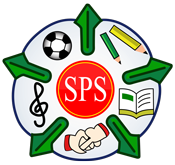Science – Biology -The Human Body
Subject Key Objective Progression & Development by Year Groups
The following is a guide to help you understand your child’s progression through school.
All lessons are differentiated. This means teachers plan activities that enable the objective to be learned by all children including those who will find the objective challenging, those children who with hard work will secure good progress and those children who can tackle extra stretch and challenge in this subject.
Intent, Implementation and Impact
The curriculum is designed with our pupils and the Swinemoor community in mind.
It enables children to access and enhance their understanding of their home, their town and the wider community, developing their cultural capital and giving them opportunities and choices about their future and their impact as they progress through their school career and beyond.
This will help them become successful members of modern British society, preparing them for the challenges and opportunities.
SCIENCE – Biology – Human Body

EYFS: “To make observations and explore animals including humans and understand how they change.”
KS1: “To understand that humans have different senses and to know which parts of the body are responsible for them.”
KS2: “To name and understand the parts of the human body.”
EYFS:
Wrist (T1)
Elbow (T1)
Ankle (T1)
KS1:
Sight (T1)
Sense(T2)
Taste bud (T2)
KS2:
Skeleton (T1)
Digestive (T2)
Circulatory (T3)
Children will gain an understanding of humans they need to flourish, how they work and what they need to stay healthy.
Pupils may demonstrate knowledge of a variety of parts of the human body and how they work and what their purpose is.
They will develop their understanding of the importance of the human body and how it functions. This could encourage a career in medicine.
What will be made, produced, performed, or published?
Children will produce a piece of portfolio work, demonstrating their knowledge and understanding.
They will participate in a sequence of lessons with a scientific focus, producing a range of evidence including written work.
What knowledge will the children have embedded?
Children will be able to recall specific scientific facts about humans and their external and internal organs and their uses. . They will demonstrate an understanding of the human body.
What retention may be demonstrated?
Here are some example questions that may be used to assess children’s understanding.
EYFS: Name 5 parts of the human body. What do we use our eyes for?
KS1: Name all five senses and which body part is linked to each. What do we have on our tongue that allows us to taste?
KS2: Name 5 key organs of the human body. What are the set of bones called that all humans have ?
Biology -The Human Body – Primary Curriculum
The Human Body – Foundation stage:
To identify and name some outer parts of the Human body.
The Human Body – Year 1:
To identify and name some outer parts of the human body and say which sense is linked to them.
The Human Body – Year 2:
To identify and name a variety of the human body’s inner organs and what the body needs to stay healthy.
The Human Body – Year 3:
To identify that humans have skeletons and muscles of support, protection and movement.
The Human Body – Year 4:
To identify that humans have skeletons and muscles of support, protection and movement and identify the different types of teeth found in humans and their different functions.
The Human Body – Year 5:
To identify and name main parts of the human circulatory system.
The Human Body – Year 6:
To identify and name main parts of the human circulatory system and describe the functions of the blood vessels and blood.
The Human Body – Mastery:
To identify and name main parts of the human circulatory system and begin to understand the human respiratory system.

This collection of short films and resources will help you understand your child’s progression through school.
The curriculum film resource has been broken down by subject area initially and then by topic area.


